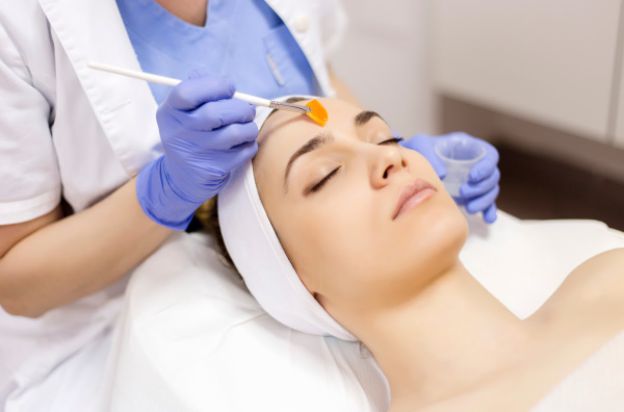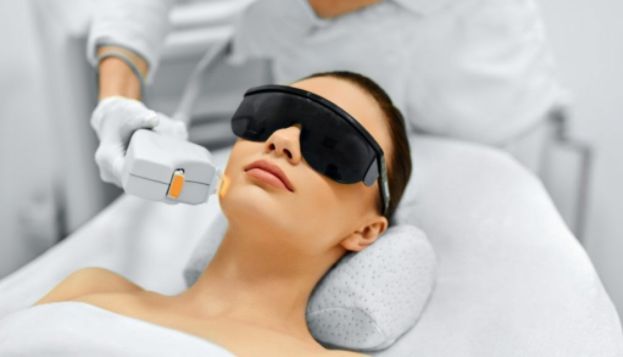
Skin pigmentation, or hyperpigmentation, as it is often called in medical terms, is a skin condition that’s been around for a long time. It is so common that many people in Toronto and virtually every other part of the world have to deal with this problem.
On its own, skin pigmentation is a harmless condition. At least, unless it comes as a result of unhealthy lifestyles or living conditions. Skin pigmentation isn’t a very pleasant thing to live with. Depending on how large the area of pigmentation is and the location, it can drastically affect your looks, leaving you feeling less than happy about it.
This is why you need the best treatment for pigmentation. Over the course of this article, we will give you effective pointers to help you get rid of skin pigmentation. But first, let us take a closer look at the skin condition that is skin pigmentation.
What is Skin Pigmentation?
Naturally, your skin should have an even tone. As a child, this is usually most evident. The main reason behind this is that you’ve yet to be affected by the adverse effects of weather conditions or various nutrition options.
However, as you grow older, you’ll begin to expose yourself to sunlight and make different lifestyle choices. Alongside that, you’ll experience different internal changes and fluctuations. More often than not, one or more of these particular factors will cause your skin to become darker in some areas than others.

That condition of one part of your skin, assuming a different darker tone than the others, is pigmentation. It affects virtually every skin tone, from the darker hues to the lighter ones.
What Are the Causes of Pigmentation?
Before delving fully into the best treatment options for pigmentation, it is important you first understand the potential causes of the condition. The most commonplace causes of pigmentation are:
Excessive exposure to sunlight
Naturally, your body is designed to produce melanin in reaction to the amount of sunlight it gets. Melanin is a naturally occurring skin pigment produced by peculiar skin cells known as melanocytes. The primary function of this skin pigment is to protect you from sunlight.
When you expose yourself to too much sunlight, your body is forced to produce more melanin in the affected areas. For example, you may be the type to always wear short-sleeved shirts/blouses that leave your arms exposed without sunblock. With continuous exposure to sunlight, your body will be forced to produce more melanin in your arms, and they will naturally take a darker tone.
Inflammation
Inflammation on your skin can occur for any number of reasons. Among others, it can be because of acne, lupus, eczema, or even a skin injury. If you have any of these, you are likely to have a darker patch of skin where the injury/skin condition was. This is particularly common with people who pop their pimples.
Medical conditions
Sometimes, pigmentation is caused by underlying medical conditions, like hemochromatosis or Addison’s disease. These often require patients to go beyond the search for treatments for pigmentation. In addition, they also have to find ways to manage the medical condition.
A disease like Addison’s attacks the adrenal glands. When it does, this often leads to pigmentation in parts of the body, including lips, knuckles, inner cheeks, knees and elbows, etc.
Melasma
Melasma is a fairly common skin condition that comes with darker patches of skin. It is alternatively referred to as the mask of pregnancy when it happens to pregnant women.

Reaction to certain types of drugs
Every human being is different, and our bodies process substances differently. As such, certain drugs may trigger a reaction in your body and lead to pigmentation. Tricyclic antidepressants and antimalarial drugs, for example, can cause your skin to take on a different tone.
However, instead of getting darker with a hint of brown, they may cause that area of skin to turn grey. Additionally, the chemicals in some creams and lotions can cause pigmentation.
What Are The Best Treatments for Pigmentation?
In reality, there are many effective forms of treatment for pigmentation. However, we’ll be focusing on two options that come out on top in the cosmetic industry. They are:
- Chemical Peels
- Laser Dynamic Pulse Control (DPC)
Chemical Peels: Everything You Need To Know
Using chemical peels for pigmentation is one of the most effective ways to get rid of the issue. Chemical peels for pigmentation involves the application of specific chemicals to the skin. Not to worry, the method of application is often controlled so that there are minimal side effects.
The main purpose of this endeavour is to induce tissue death. Depending on the desired results, the chemicals can penetrate just the surface level or deep into the skin. Nonetheless, when the chemicals are removed from your skin, the dead tissue comes off with them. This forces your skin to regenerate itself. In the end, what you’ll get is healthy, smooth skin with a more even skin tone.
When you use chemical peels for pigmentation, the dead pigmented skin tissues will come off with the peel. Afterwards, the skin underneath will repair itself, and the tone will even out.
Procedure For Chemical Peels in Toronto: How Does It Work?
Depending on the severity of the pigmentation, the best treatment may be anything between superficial peels to deeper peels. The former rarely requires any anesthesia. Any discomfort caused by the chemicals’ slight burning sensation can be alleviated with evaporation from fans or cold compresses. On the other hand, deeper chemical peels will require local anesthesia to reduce discomfort to the bare minimum.
The process usually starts when your medical aesthetician uniformly applies a defatting solvent on the required area of treatment. Afterwards, the peeling solution will be applied for a specific amount of time. As soon as the time is right, your medical aesthetician will apply a solution to neutralize the chemicals. Then, bandages may be applied over the area (for precautionary purposes), and you can go home the same day.
Before Chemical Peels: How Do You Prepare?
If you truly want impressive before and after results for the treatment of pigmentation with chemical peels, you need to do a few things yourself. While you don’t necessarily need to change your entire lifestyle, it is still wise to:
- Take a break from waxing, electrolysis, and other related activities before you get a chemical peel.
- Use sunscreens with high SPF ratings before and after you’ve gotten your chemical peels. There’s no time limit to this one. It’s simply good advice, even if you’re not getting chemical peels.
- Clean your body thoroughly before you go for the peel.
- Arrange for a ride back home if your procedure will require sedation.

What Are the Benefits of Chemical Peels?
Unlike many other pigmentation treatment methods, you can rest assured that chemical peels will work for you. This is especially so if you do it with a professional aesthetician.
Additionally, the process isn’t invasive. Along with this comes such advantages like spending minimal time at the hospital for recovery. Finally, at the end of the process, the treated skin will look much more youthful and appealing.
What Are the Potential Side Effects of Chemical Peels?
Chemical peels aren’t dangerous, especially when you work with a professional. However, they can lead to the following side effects:
- Redness. Since you’re trying to induce tissue death on different layers of skin, this is actually quite normal. Depending on the intensity of your chemical peel, this side effect shouldn’t last too long.
- Infection. This isn’t a certainty. However, it can happen if you do not follow your medical aesthetician’s orders regarding your skin’s proper care after the chemical peel.
- Scarring. This rarely ever happens. However, if it does, it may be because the chemicals stayed too long on your skin, causing uncontrolled injury. You can easily avoid this by working with a professional medical aesthetician in Toronto.
Generally, these side effects are few and far between. In fact, many of them only happen if you or your medical aesthetician is negligent. If you choose experts in pigmentation treatment in Toronto and you’re careful to follow your aftercare instructions, you’ll be fine.
Who is Eligible To Get Chemical Peels?
Virtually anyone with skin pigmentation challenges can get a chemical peel. This is especially so if you’re light-skinned, and the pigmentation comes from overexposure to sunlight. However, you should avoid chemical peels if:
- You’re pregnant
- If you often have cold sores
To be doubly sure, you need proper consultation with your medical aesthetician. That way, you can know if chemical peels are for you or not.
Laser Dynamic Pulse Control (DPC): Everything you need to know
This is another that qualifies as the best treatment for pigmentation in Toronto. The procedure involves using special light beams to get into different layers of your dermis/epidermis. This particular action of skin penetration is repeated multiple times.
After the right amount of repetitions, the pigmented skin lesions will be exposed. Keep in mind that the number of repetitions is largely determined by your medical aesthetician. When the lesions are exposed, they will remain as they are for a while. Eventually, they’ll turn into crust-like surfaces and fall off without much of a hassle.
To get the perfect results with Laser Dynamic Pulse Control, you need to go through more than one treatment. However, the more treatments you undergo, the more even your skin tone will get. After some time, you will have completely gotten rid of your pigmentation challenges.
How Exactly Does Laser Dynamic Pulse Control (DPC) Work?
The darker or redder tones on your skin attract DPC light beams to themselves automatically. As soon as that happens, the Laser Dynamic Pulse Control device will use photothermolysis to coagulate the pigments. In no time, these pigments lose their ability to absorb blood. This causes them to disappear eventually.
What makes it unique?
In a world of multiple pigment treatment options, it can be hard to determine the best treatment for pigmentation. After all, many of them seem more or less the same.
But, with DPC, things are different. DPC uses high levels of energy as well as optimal protocols during treatment. This makes the entire procedure as fast and effective as possible.
Alongside that, DPC offers a certain level of flexibility that allows for optimal results. This is evident in the device’s selection of smooth, high, and long configurations. This flexibility allows you to enjoy a fairly large amount of thermal effects. Some of them include:
- Heating tissues selectively to achieve neocollagenesis.
- Activating secondary healing response through higher levels of heating.
- Stimulating higher levels of epidermal regeneration.
- Forcing lesions to clear out by inducing controlled thermal damage.
What are The Benefits of Laser Dynamic Pulse Control for Skin Pigmentation?
This peculiar treatment method comes with a load of benefits to the users. At the top of the list is that it gives you smooth, clear skin without the unappealing discolorations. However, beyond that, you can get a few more benefits along the line. They’re listed below.
- The procedure hardly comes with any pain.
- There is no risk of inflammation.
- Your blood and nutrient circulation increase afterwards.
- Your tissue regeneration improves.
- Your nerve repair and regeneration levels improve.
Related article: What Are the Causes of Skin Pigmentation?
What are the Potential Risks of Laser Dynamic Pulse Control?
If you’ve ever asked, “what does it take to get rid of skin pigmentation?”, this is one of the safest methods available in Toronto. The device uses auto pulse configurations. These help to ensure that treatment is as safe as you can imagine. Alongside that, DPC devices have a cooling component installed within them.
It makes the treatment procedure a very comfortable one for the patients. There is a risk of scarring, irritation, or mild discomfort. However, these are very rare and shouldn’t even come up if you’re getting treated by an experienced professional.
What is the Cost of DPC Treatment in Toronto?
DPC treatments for pigmentation can cost anything from $500 – $2000 in Toronto. The cost of this treatment method varies depending on several factors. They include:
- The size of the area to be treated.
- The company/medical spa providing your treatment.
- The equipment used.
- Your location.
What Are The Other Options for Treating Skin Pigmentation?
Having gone through the best treatment for pigmentation, you should know it doesn’t end there. There are other options available for treating pigmentation.
Medical treatments
These methods require attention from a certified skincare expert. Basically, you’ll need help in terms of dosage or even administration. It includes the following:
- Lightening creams: This is considered a medical alternative because you still need the advice of a skincare expert. The last thing you want is to use a cream with dangerous compounds. Nevertheless, you can also try to get darker skin patches on the same level as the rest of your body.
- Retinoids: These are derived from vitamin A. They’re designed to penetrate deep into your skin to treat your pigmentation.
- Face acids: This is useful when you only have mild cases of pigmentation. It will exfoliate the top layer of your skin. That way, new skin cells can come up and even out your skin tone.

Intense pulsed light therapy
This requires the attention of a trained professional. This treatment uses beams of light to induce the production of collagen. Collagen is useful for the rejuvenation and repair of damaged skin.
Natural remedies
You can easily carry these out at home without necessarily needing professional advice. However, you should know they are nowhere as effective as chemical peels or Laser Dynamic Pulse Control for treating pigmentation.
- Licorice extract: This contains ingredients that can help you solve your pigmentation problems. If you can get the extract yourself, that’s fine. However, an alternative is to get a cream or lotion with licorice extracts as an active ingredient.
- Milk: Milk contains lactic acid, and this has been shown to help with pigmentation problems. As such, you can use milk, buttermilk, or sour milk to help with skin discoloration.
- Tomato paste: This can be useful for pigmentation. However, the tomato paste has to be high in lycopene. Otherwise, it may not serve the purpose.
In Conclusion
Pigmentation is a major cosmetic concern for many living in Toronto. If left untreated, it will affect how you look. In severe cases, it may even affect your self-esteem. In our opinion, that’s reason enough to seek out the best treatment for pigmentation.
Thankfully, we’ve outlined them for you in detail. You can choose to go with chemical peel treatments or use Laser Dynamic Pulse Control treatments. Here at Canada MedLaser, our expert medical aestheticians can help you find the best treatment option for your unique situation. Book a consultation session with us today!
Book Free Consultation
"*" indicates required fields
-
Facebook
-
Twitter
-
Linkedin






